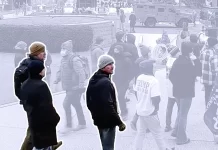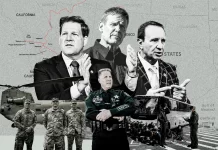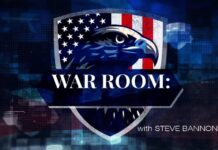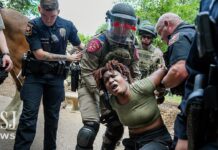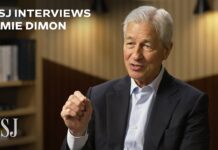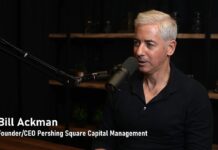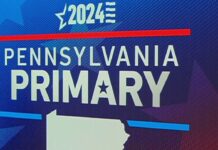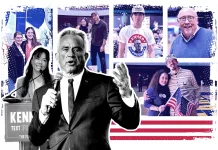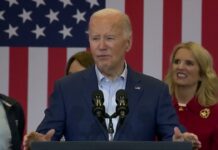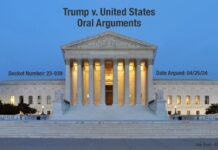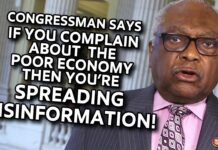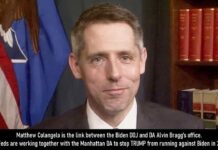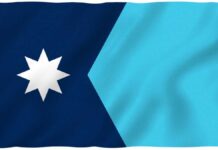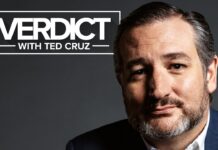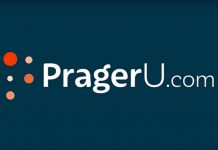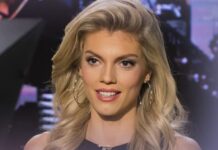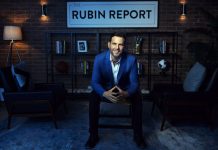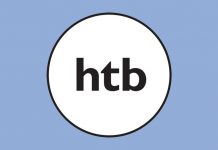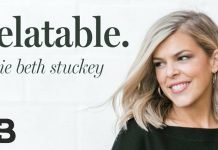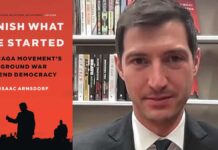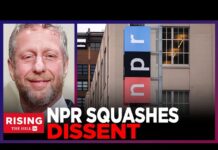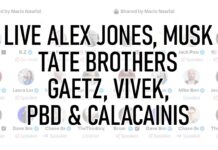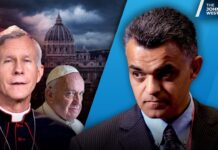Select Subcommittee On The Weaponization Of The Federal Government
Testimony of D. John Sauer Summary Statement
Mr. Chairman, Members of the Subcommittee:
On July 4, 2023—Independence Day—Judge Terry A. Doughty of the U.S. District Court of the Western District of Louisiana entered an historic injunction against White House and other federal officials to prevent them from “urging, encouraging, pressuring, or inducing in any manner the removal, deletion, suppression, or reduction of content containing protected free speech posted on social-media platforms.” Ex. 2, at 4.
Judge Doughty’s opinion contains 82 pages of detailed factual findings, supported by 577 citations of the record evidence, drawn from roughly 20,000 pages of the federal Government’s own emails and communications with social-media platforms, and the sworn testimony of senior federal officials in six full-length depositions. Ex. 1, at 4-86.
The Department of Justice filed an “emergency” stay motion in the U.S. Court of Appeals to block this injunction. Notably, in its stay motion, the Government hardly disputed a single factual finding from Judge Doughty’s opinion. These facts—supported by overwhelming evidence drawn from federal officials’ own mouths—are irrefutable.
The Court of Appeals has not granted this stay motion, but it has entered a “temporary administrative stay” and granted expedited briefing and oral argument on August 10. Contrary to some recent suggestions, a temporary administrative stay in such cases is “routine practice” in the Fifth Circuit and does not reflect a prejudgment of the merits. In re Abbott, 800 F. App’x 296, 298 (5th Cir. 2020).
The Louisiana opinion demonstrates that federal officials have covertly injected themselves into the content-moderation decisions of major social-media platforms, through a years-long campaign of threats, “unrelenting pressure,” collusion, and deceit. This campaign targets specific speakers and viewpoints, and it also affects platforms’ content-moderation policies.
Today, I offer seven observations drawn from the Louisiana opinion:
First, the Louisiana court found, based on overwhelming evidence, that federal officials cause the censorship of disfavored viewpoints. The Government frequently claims that social-media platforms, acting on their own, would censor all the targeted speech anyway. This is demonstrably false. Again and again, the Louisiana court found the platforms would not suppress the speech that federal officials target absent their intervention; federal officials cause the additional censorship. The deplatforming of Alex Berenson, the throttling of Tucker Carlson’s content, the silencing of the so-called “Disinformation Dozen,” the de-boosting of so-called “borderline” content on Facebook, the censorship of the Hunter Biden laptop story, and much more—all were suppressed because of federal officials’ efforts.
Second, the scope and reach of federal censorship is staggering. As Louisiana found, it affects “millions” of social-media speakers and posts across America. It affects virtually any American who reads, listens, engages, or posts on social media about hotly disputed social and political questions.
Third, federal censorship is ongoing and shows no signs of stopping. The Louisiana opinion cites undisputed evidence demonstrating that federal officials’ censorship efforts are in full swing, and they are expanding to new frontiers. Left unchecked, federal censorship will reach virtually any disputed social and political question over which federal officials want to impose their power.
Fourth, the Louisiana opinion shows that federal officials are most eager to silence truthful speech, and to muzzle the most influential critics of the Administration and its policies. Tucker Carlson, Alex Berenson, and others were censored because they were the most effective speakers opposed to the Administration and its policies. Federal officials try to justify censorship as protecting innocent Americans from supposed “misinformation” and “disinformation.” This defense is false. Censorship is not about truth. It is about power—preserving and expanding the power of the censors and the political narratives they favor.
Fifth, federal officials are deeply intertwined with the “Censorship-Industrial Complex.” The Louisiana court made detailed findings about the close connections and cooperation between federal national-security officials and the mass-surveillance and mass-censorship enterprise calling itself the “Election Integrity Partnership” and the “Virality Project.” Not just CISA officials, but also White House, State Department, and Surgeon General officials have deep ties to this enterprise. As Louisiana found, “CISA and the EIP were completely intertwined.”
Sixth, federal officials not only dictate the outcomes of specific content-moderation decisions. They also directly induce changes to content-moderation policies at major social-media platforms to ban disfavored viewpoints in advance. As the Louisiana court held, federal officials used “the power of the government to pressure social-media platforms to change their policies and to suppress free speech.”
Seventh, the federal Censorship Enterprise has succeeded in transforming online discourse throughout America by rendering entire viewpoints virtually unspeakable on social media—the “modern public square.” It also directly interferes with another cherished First Amendment freedom—the right of citizens to organize to petition the government for redress of grievances. This ongoing distortion of the most fundamental American freedom, the right to free speech, is intolerable under the First Amendment.
I welcome the Subcommittee’s questions.
***
Biographical Statement
D. John Sauer is the Founder and Principal of the James Otis Law Group, LLC. He serves
as a Special Assistant Attorney General for the Louisiana Department of Justice under Attorney General Jeff Landry, where he acts as litigation counsel in the case Louisiana, et al. v. Biden et al., No. 3:22-cv-01213-TAD-KDM (W.D. La.). He served for six years as the Solicitor General of Missouri in the Missouri Attorney General’s Office, and for five years as an Assistant U.S. Attorney in the Eastern District of Missouri. Mr. Sauer has argued in the U.S. Supreme Court and handled litigation and appeals in cases across the country. He is a Rhodes Scholar and a magna cum laude graduate of Harvard Law School. During October Term 2005, he served as a law clerk to Justice Antonin Scalia of the U.S. Supreme Court.
Written Testimony
My name is D. John Sauer. I serve as a Special Assistant Attorney General for the State of Louisiana, and I serve as litigation counsel in the case Louisiana, et al. v. Biden, et al., No. 3:22-cv-01213-TAD (W.D. La.) (“Louisiana”). I testified before this panel on March 30, 2023, regarding the status of discovery in that case. My previous testimony is attached as Exhibit 3. I speak here today in my individual capacity, and not on behalf of any of my clients.
On July 4, 2023—Independence Day—Judge Terry A. Doughty of the U.S. District Court for the Western District of Louisiana entered a historic injunction in Louisiana v. Biden. See Louisiana Docs. 293, 294 (attached as Exhibits 1 and 2). The injunction prevents federal officials from the White House and several federal agencies from “urging, encouraging, pressuring, or inducing in any manner the removal, deletion, suppression, or reduction of content containing protected free speech posted on social-media platforms.” Ex. 2, at 4.
The injunction is based on 82 pages of detailed factual findings supported by 577 citations of evidence in the record, which includes over 18,000 pages of federal officials’ own documents and communications with social-media platforms, and six full-length depositions of senior federal officials with firsthand knowledge of federal censorship practices. In short, the judgment is based on overwhelming evidence drawn from federal officials’ own mouths.
It was particularly fitting that the judgment issued on Independence Day, the day celebrating the Founding Fathers’ struggle for our freedom, to which they pledged their lives, their fortunes, and their sacred honor. This was fitting because the injunction protects and restores our very first freedom—the freedom of speech under the First Amendment—from what the Louisiana court aptly describes as “arguably … the most massive attack against free speech in United States’ history.” Ex. 1, at 2.
The U.S. Department of Justice filed an immediate appeal and an emergency application for stay pending appeal. The Court of Appeals did not grant that motion, but it entered a temporary administrative stay and ordered expedited briefing with oral argument on August 10. Contrary to some recent suggestions, entering a temporary administrative stay is “routine practice” in the Fifth Circuit and does not reflect a prejudgment of the merits. See In re Abbott, 800 F. App’x 296, 298 (5th Cir. 2020) (“Entering temporary administrative stays so that a panel may consider expedited briefing in emergency cases is a routine practice in our court.”).
My testimony today reports on Judge Doughty’s historic judgment and offers seven observations on his opinion and injunction.
I. Federal Officials Cause Political Censorship—Not Platforms Acting on Their Own.
First, the censorship of viewpoints disfavored by federal officials on social media is not something that the platforms are doing simply on their own. In detailed factual findings, the Louisiana court found, again and again, that federal action causes the censorship of the speakers and viewpoints that federal officials disfavor—i.e., absent the action of federal officials, the platforms would not have censored them. See, e.g., Ex. 1, at 18, 19, 24, 29, 32, 25, 36, 65, 80, 81, 101, 107, 129-32. These findings rest on extensive, unrefuted evidence.
As the district court found, the Louisiana evidence abounds with examples where it is perfectly clear that federal officials induced the platforms to censor content that they would not have censored on their own. At the instigation of the White House, “Facebook reported the Tucker Carlson content had not violated Facebook’s policy, but Facebook gave the video a 50% demotion for seven days and stated that it would continue to demote the video.” Id. at 19. With regards to the so-called “Disinformation Dozen,” “[t]he public and private pressure from the White House … had its intended effect. All twelve members of the ‘Disinformation Dozen’ were censored, and pages, groups, and accounts linked to the Disinformation Dozen were removed.” Id. at 24.
After months of resistance by platforms to federal demands, pressure and threats from the White House finally brought platforms to heel, and they ultimately became compliant “partners” with federal officials in censorship. For example, Nick “Clegg of Facebook reached out to attempt to request ‘de-escalation’ and ‘working together’ instead of the public pressure. In the call between Clegg and Murthy, Murthy told Clegg he wanted Facebook to do more to censor misinformation on its platforms,” id. at 29—and Facebook complied. “After the meetings with social-media platforms, the platforms seemingly fell in line with the Office of Surgeon General’s and White House’s requests. Facebook announced policy updates about censoring misinformation on May 27, 2021, two days after the meeting. As promised, Clegg provided an update on misinformation to the Office of Surgeon General on May 28, 2021, three days after the meeting and began sending bi-weekly COVID content reports on June 14, 2021.” Id. at 32.
Facebook, in particular, stated that it wanted to “better understand the scope of what the White House expects of us on misinformation going forward,” and promised to “work together collaboratively” to meet the White House’s expectations: “On July 16, 2021, Clegg emailed Murthy and stated, ‘I know our teams met today to better understand the scope of what the White House expects of us on misinformation going forward…. I’m keen to find a way to deescalate and work together collaboratively. I am available to meet/speak whenever suits.’” Id. at 35. “Clegg even sent a follow-up email after the meeting to make sure Murthy saw the steps Facebook had been taking to adjust policies with respect to misinformation and to further address the ‘disinfo-dozen.’ Clegg also reported that Facebook had ‘expanded the group of false claims that we remove, to keep up with recent trends of misinformation that we are seeing.’ Further, Facebook also agreed to ‘do more’ to censor COVID misinformation.” Id. at 36.
Federal agencies have enviable success rates in inducing platforms to remove disfavored speakers and content. After leveraging years of public and private pressure from federal officials and congressional staffers, “Chan testified the FBI had about a 50% success rate in having alleged election disinformation taken down or censored by social-media platforms.” Id. at 65. “[T]he FBI had a 50% success rate regarding social media’s suppression of alleged misinformation.” Id. at 107.
The CISA-launched “Election Integrity Partnership” (“EIP”) also causes extensive censorship that platforms would not have imposed on their own. “The EIP … successfully pushed social-media platforms to adopt more restrictive policies about election-related speech in 2020.” Id. at 80. It then employed those new policies aggressively to pressure platforms to remove potentially millions of social-media posts encompassing entire disfavored narratives: “In the 2020 election cycle, the EIP processed 639 ‘tickets,’ 72% of which were related to delegitimizing the election results. Overall, social-media platforms took action on 35% of the URLs reported to them. One ‘ticket’ could include an entire idea or narrative and was not always just one post. Less than 1% of the tickets related to “foreign interference.’” Id. at 81 (emphasis added).
The district court aptly summarized this evidence: “The White House Defendants made it very clear to social-media companies what they wanted suppressed and what they wanted amplified. Faced with unrelenting pressure from the most powerful office in the world, the social-media companies apparently complied.” Id. at 101.
The Government’s principal defense is that platforms would have censored all this content on their own, but the Louisiana court held that “[t]his argument is wholly unpersuasive. Unlike previous cases that left ample room to question whether public officials’ calls for censorship were fairly traceable to the Government; the instant case paints a full picture. A drastic increase in censorship, deboosting, shadow-banning, and account suspensions directly coincided with Defendants’ public calls for censorship and private demands for censorship.” Id. at 130-31.
The district court also emphasized that there was an overarching campaign of threats, pressure, and demands from federal officials lasting over years, that effectively overwhelmed the platforms’ resistance:
Government officials began publicly threatening social-media companies with adverse legislation as early as 2018. In the wake of COVID-19 and the 2020 election, the threats intensified and became more direct. Around this same time, Defendants began having extensive contact with social-media companies via emails, phone calls, and in-person meetings. This contact, paired with the public threats and tense relations between the Biden administration and social-media companies, seemingly resulted in an efficient report-and-censor relationship between Defendants and social-media companies.
Id. at 131. This evidence shows “a causal and temporal link” between federal officials’ threats and demands, and the platforms’ decisions to ramp up censorship of ordinary Americans’ speech. Id.
II. The Scope and Reach of Federal Censorship Are Staggering.
Second, the scope and reach of federal censorship are enormous. Federal censorship affects millions of speakers and posts on social media, and it affects virtually every American with a social-media account who follows discourse on social and political issues. As Louisiana held, the First Amendment protects, not just the right to speak, but the “right to listen.” When federal officials silence a single influential speaker—such as Tucker Carlson or Robert F. Kennedy Jr.—they violate the rights of hundreds of thousands or millions of potential listeners.
The district court’s factual findings, based on extensive evidence, emphasize that federal censorship silences “millions” of posts, speakers, and accounts on social media. Ex. 1, at 82, 94, 107, 123, 137-38. As the district court stated, “Plaintiffs have put forth ample evidence regarding extensive federal censorship that restricts the free flow of information on social-media platforms used by millions of Missourians and Louisianians, and very substantial segments of the populations of Missouri, Louisiana, and every other State.” Id. at 123.
It is particularly chilling that, in certain instances, federal officials stifle the rights of “millions” in a single stroke. The FBI’s deceptive campaign to induce platforms to suppress the Hunter Biden laptop story in 2020 provides a prime example. After reviewing extensive evidence, including the deposition testimony of FBI agent Elvis Chan, the Louisiana court found that the FBI was directly responsible for the censorship of the Hunter Biden laptop story on social media, affecting the First Amendment rights of “millions of U.S. citizens” at one blow:
The FBI’s failure to alert social-media companies that the Hunter Biden laptop story was real, and not mere Russian disinformation, is particularly troubling. The FBI had the laptop in their possession since December 2019 and had warned social-media companies to look out for a “hack and dump” operation by the Russians prior to the 2020 election. Even after Facebook specifically asked whether the Hunter Biden laptop story was Russian disinformation, [Laura] Dehmlow of the FBI refused to comment, resulting in the social-media companies’ suppression of the story. As a result, millions of U.S. citizens did not hear the story prior to the November 3, 2020 election. Additionally, the FBI was included in Industry meetings and bilateral meetings, received and forwarded alleged misinformation to social-media companies, and actually misled social-media companies in regard to the Hunter Biden laptop story.
Id. at 107 (emphasis added).
The so-called “Election Integrity Partnership” and “Virality Project” (the same project by another name) also reflect the staggering scope of federal social-media censorship. The EIP and VP engage in mass-surveillance of social-media posts reflecting disfavored viewpoints in real-time, reviewing hundreds of millions of posts and censoring millions of them. As the district court found, “[t]he tickets and URLs encompassed millions of social-media posts, with almost twenty-two million posts on Twitter alone.” Id. at 82. As noted in my previous testimony:
The “Election Integrity Partnership” (EIP)—a censorship consortium of academics, think thanks, federal and state government officials, and social-media platforms—boasts that it surveilled 859 million Tweets, and tracked 21,897,364 Tweets on “tickets” as “misinformation,” in 2020 alone. Again, that is one social-media platform in one election cycle—and the EIP deals with many platforms and appears to be active in every cycle. … The “Virality Project”—a mass-surveillance and censorship operation conducted by the same group as the EIP—boasts that it tracked content with about 6.7 million engagements on social media per week, or over 200 million over the Project’s seven months.
Ex. 3, at 4 (emphasis in original).
This federal censorship campaign extends across the federal agencies affected by the Louisiana injunction. So great is the reach of the federal officials involved that they fundamentally distort online discourse on hotly disputed social and political questions for millions of Americans: “They flagged posts and provided information on the type of posts they wanted suppressed. They also followed up with directives to the social-media companies to provide them with information as to action the company had taken with regard to the flagged post. This seemingly unrelenting pressure by Defendants had the intended result of suppressing millions of protected free speech postings by American citizens.” Ex. 1, at 94 (emphasis added).
III. Federal Censorship Is Ongoing and Shows No Signs of Stopping on Its Own.
Some defenders of federal censorship have argued that it was a temporary measure, adopted solely to address the unique circumstances of COVID-19 and the 2020 election. This is demonstrably wrong. Federal censors show no inclination to relinquish their enormous power over online discourse. On the contrary, federal censorship efforts are continuing and expanding. The district court made numerous findings, based on extensive evidence, demonstrating the ongoing, expanding federal efforts in this area.
When the district court entered its injunction, federal censorship activity was still in full swing. The CDC’s “regular biweekly meetings with Google” on disinformation “continue[] to the present day.” Ex. 1, at 46. The “USG-Industry” meetings on disinformation are “continuing” and “will continue through the 2024 election cycle.” Id. at 60. The “bilateral meetings between FBI and [seven platforms] … are continuing” and “will increase to monthly and weekly nearer the elections.” Id. White House officials continued to badger platforms on censorship throughout 2022. Id. 26. “[T]he FBI is continuing its efforts to report disinformation to social-media companies to evaluate for suppression and/or censorship.” Id. 67. The FBI’s Elvis Chan says: “Post-2020, we’ve never stopped.” Id. at 67.
CISA’s “Industry” meetings to discuss disinformation with platforms “continue to this day,” and “increase in frequency as each election nears.” Id. at 69. CISA still conducts “five sets of recurring meetings with social-media platforms that involved discussions of misinformation, disinformation, and/or censorship of speech on social media.” Id. 75. “CISA publicly states that it is expanding its efforts to fight disinformation-hacking in the 2024 election cycle.” Id. at 76. This includes expanding its censorship efforts to new topics and viewpoints. Id. at 76. “CISA Director Easterly stated that CISA is ‘beefing up its misinformation and disinformation team in wake of a diverse presidential election a proliferation of misleading information online.’ Easterly stated she was going to “grow and strengthen” CISA’s misinformation and disinformation team.”
Id. at 77.
The Election Integrity Partnership “continued to operate during the 2022 election cycle,” id. at 71, and states that it will “continue its work in future elections.” Id. at 83.
These ongoing censorship activities present a grave, imminent, and continuing threat to speakers specifically targeted by federal censors. As the district court found, federal officials are “currently involved in an ongoing project that encourages and engages in censorship activities specifically targeting [Jim] Hoft’s website.” Id. 127. “[Jill] Hines, too, recounts past and ongoing censorship injuries, stating that her [pages] are constantly at risk of being completely de-platformed.” Id. at 127-28. “[Dr. Jayanta] Bhattacharya … is the apparent victim of an ongoing ‘campaign’ of social-media censorship, which indicates that he is likely to experience future acts of censorship.” Id. at 127. “[Dr. Martin] Kulldorff’s ongoing censorship experiences on his personal social-media accounts provide evidence of ongoing harm and support the expectation of imminent future harm.” Id. “[Dr. Aaron] Kheriaty also affirms ongoing and anticipated future injuries, noting that the issue of ‘shadow banning’ his social-media posts has intensified since 2022.” Id. at 127. “[Jill] Hines, too, recounts past and ongoing censorship injuries, stating that her personal Facebook page, as well as the pages of Health Freedom Louisiana and Reopen Louisiana, are constantly at risk of being completely de-platformed.” Id. at 127-28. “At the time of her declaration, Hines’ personal Facebook account was under an ongoing ninety-day restriction. … [T]he evidence supplied in support of the preliminary injunction strongly implies that these restrictions can be directly traced back to federal officials.” Id. at 128.
Notably, when the court asked, “how can I be sure that this is not going to happen again,” Defendants’ counsel answered, “it is not the government’s argument that … this … will never happen again.” May 26, 2023 Tr., at 122:1-2, 7-8 (emphasis added). As the Louisiana court found, “it is certainly not imaginary or speculative to predict that Defendants could use their power over millions of people to suppress alternative views or moderate content they do not agree with in the upcoming 2024 national election.” Ex. 1, at 142.
IV. Federal Officials Target Truthful Speech and the Most Influential Critics of the Administration and Its Policies.
The argument that federal censorship is a benign exercise that protects Americans from false and misleading information on social media is itself false and misleading. As the Louisiana court found, federal officials especially target truthful speech and the most influential critics of the Biden Administration, its policies, and its preferred narratives. Federal censorship targets specific speakers—especially influential critics of the Administration’s policies and those who organize political opposition to them, such as Tucker Carlson, Tomi Lahren, Sean Hannity, Robert F. Kennedy Jr., Fox News, Breitbart News, Alex Berenson, the so-called “Disinformation Dozen,” Dr. Bhattacharya, Dr. Kulldorff, Dr. Kheriaty, Jill Hines, and Jim Hoft—among many others. And it targets specific viewpoints—i.e., those questioning the political narratives most preferred by the federal officials pushing for censorship.
The targeted speakers include dozens of speakers that the district court specifically found that federal officials suppressed. See Ex. 1, at 17 (Robert F. Kennedy Jr. and Children’s Health Defense); id. at 17-18, 129 (Tucker Carlson and Tomi Lahren); id. at 19 (Alex Berenson); id. at 24 (the “Disinformation Dozen”); id. at 63-64 (the New York Post); id. at 84-85 (“medical freedom” groups, which effectively organize political opposition to mask mandates, lockdowns, vaccine mandates, and similar policies); id. at 85-86 (One America News, Breitbart News, Alex Berenson, Tucker Carlson, Fox News, Candace Owens, The Daily Wire, RFK Jr., Simone Gold, Dr. Joseph Mercola, and others).
The Louisiana evidence makes clear that these speakers are suppressed precisely because they are effective in criticizing the Administration’s policies and undermining the Administration’s preferred narratives. “White House officials wanted to know why Alex Berenson … had not been ‘kicked off’ Twitter,” because White House officials viewed Berenson as ‘the epicenter of disinfo that radiated outwards to the persuadable public.’” Id. at 19. Despite his wide popularity, Berenson’s social-media account did not survive federal pressure: “Berenson was suspended thereafter on July 16, 2021, and was permanently de-platformed on August 28, 2021.” Id.
Likewise, the so-called “Disinformation Dozen” were targeted because White House officials viewed them as the source of 65 percent of vaccine-hesitancy content on social-media. Again, their wide reach could not save them—Facebook “fell in line” with White House demands and deplatformed the “Disinformation Dozen” in response to White House pressure. Ex. 1, at 32.
Despite its claim to oppose “misinformation” and “disinformation,” federal censorship does not focus primarily on suppressing false information. On the contrary, the Louisiana evidence and the court’s findings demonstrate that federal censors are particularly interested in suppressing truthful information that undercuts federal officials’ policies and preferred narratives. Rob Flaherty’s incessant demands that Facebook, Instagram, WhatsApp, and other platforms crack down on so-called “borderline” content provide a perfect example of this. See Ex. 1, at 13-14, 20, 22-23, 99. “Borderline” content is typically truthful content that federal officials view as likely to undercut their preferred narratives. The White House’s hyper-focus on “borderline” content demonstrates that federal censorship does not focus on truth but on narrative control. Censorship is not about truth but about power—specifically, defending and expanding the power of those who wield the authority to censor.
Again, the Hunter Biden laptop story provides another prime example of this dynamic. The story was a truthful story that gravely threatened the power of powerful federal officials. Accordingly, it was relentlessly censored. The full authority of the FBI, at the organization’s high echelons, orchestrated a deceptive campaign to deceive platforms into censoring the story—as the Louisana court has now found, based on extensive evidence. Id. at 107.
The Louisiana court’s findings contain many other examples. “As an example, [CISA intern Alex] Zaheer, when switchboarding for CISA, forwarded supposed misinformation to CISA’s reporting system because the user had claimed ‘mail-in voting is insecure’ and that ‘conspiracy theories about election fraud are hard to discount.’” Id. at 74. Such claims are not “false” or “disinformation”—they are claims that undercut the federal censors’ preferred narratives. The 2017 edition of the U.S. Department of Justice’s Manual on the Federal Prosecution of Election Offenses states that “[a]bsentee ballots are particularly susceptible to fraudulent abuse because, by definition, they are marked and cast outside the presence of election officials and the structured environment of a polling place.” U.S. Dep’t of Justice, Federal Prosecution of Election Offenses (8th ed. Dec. 2017), at 28-29. The Manual reports that “the more common ways” that election-fraud “crimes are committed include … [o]btaining and marking absentee ballots without the active input of the voters involved.” Id. at 28. Raising such concerns was a mainstream view shared by the Carter- Baker Commission; the U.S. Supreme Court (in an opinion by Justice John Paul Stevens); writers for the New York Times, the Washington Post, MSNBC, and Slate; and the U.S. Department of Justice. Yet, in 2020, this view became unspeakable “disinformation” on social media not because it was false, but because it undercut the censors’ preferred narrative that mail-in ballots are totally secure.
The Louisiana findings contain many other examples demonstrating that censorship is not about truth but about power over narratives. Dr. Kheriaty’s content “opposing COVID-19 lockdowns and vaccine mandates” was censored, Ex. 1, at 6; Jill Hines’s criticism of the efficacy of Pfizer vaccines and “posts about the safety of masking and adverse events from vaccinations, including VAERS data” were censored, id. at 5; Jim Hoft’s posts about the efficacy of COVID vaccines, the security of voting by mail, and other election-security issues were censored, id. at 6; and so forth. The district court aptly summarized the effects of federal censorship:
Opposition to COVID-19 vaccines; opposition to COVID-19 masking and lockdowns; … the lab-leak theory of COVID-19; opposition to the validity of the 2020 election; opposition to President Biden’s policies; statements that the Hunter Biden laptop story was true; and opposition to policies of the government officials in power. All were suppressed.
Id. at 154. The key theme tying together all these strands of content silenced by federal censorship is “opposition to policies and narratives favored by government officials in power.” Id.
V. Federal Officials Are Deeply Intertwined With the “Censorship-Industrial Complex.”
My previous testimony highlighted the critical role of so-called “Election Integrity Partnership” and its COVID-related spin-off, the “Virality Project,” in federal censorship activities. This massive censorship enterprise was launched by the federal national-security state, and it plays a key role in what other witnesses have described as the “Censorship-Industrial Complex.” See Ex. 3, at 19-24.
The Louisiana judgment makes critical factual findings based on extensive evidence about the role of the federal government in the EIP/VP. The key takeaway: “CISA and the EIP were completely intertwined.” Ex. 1, at 113. Thus, the federal national-security state is “completely intertwined” with a cutting-edge mass-surveillance and mass-censorship operation that is directly responsible for silencing millions of American voices on social media.
In Louisiana, Defendants argued that “the EIP operated independently of any government agency.” Id. at 111. As the Court noted, “[t]he evidence shows otherwise.” Id. The Court then recounted many of the points of overlap and entwinement between federal national-security officials and the EIP:
[T]he EIP was started when CISA interns came up with the idea; CISA connected the EIP with the CIS, which is a CISA-funded non-profit that channeled reports of misinformation from state and local government officials to social-media companies; CISA had meetings with Stanford Internet Observatory officials (a part of the EIP), and both agreed to “work together”; the EIP gave briefings to CISA; and the CIS (which CISA funds) oversaw the Multi-State Information Sharing and Analysis Center (“MS-ISAC”) and the Election Infrastructure Information Sharing and Analysis Center (“EI-ISAC”), both of which are organizations of state and local governments that report alleged election misinformation.
CISA directs state and local officials to CIS and connected the CIS with the EIP because they were working on the same mission and wanted to be sure they were all connected. CISA served as a mediating role between CIS and EIP to coordinate their efforts in reporting misinformation to social-media platforms, and there were direct email communications about reporting misinformation between EIP and CISA. Stamos and DiResta of the EIP also have roles in CISA on CISA advisory committees. EIP identifies CISA as a “partner in government.” The CIS coordinated with EIP regarding online misinformation. The EIP publication, “The Long Fuse,” states the EIP has a focus on election misinformation originating from “domestic” sources across the United States. EIP further stated that the primary repeat spreaders of false and misleading narratives were “verified blue-checked accounts belonging to partisan media outlets, social-media influencers, and political figures, including President Trump and his family.” The EIP further disclosed it held its first meeting with CISA to present the EIP concept on July 9, 2020, and EIP was officially formed on July 26, 2020, “in consultation with CISA.” The Government was listed as one of EIP’s Four Major Stakeholder Groups, which included CISA, the GEC, and ISAC.
Id. at 111-12.
The Court further found: “The ‘partners’ were so successful with suppressing election disinformation, they later formed the Virality Project, to do the same thing with COVID-19 misinformation that the EIP was doing for election disinformation. CISA and the EIP were completely intertwined. Several emails from the switchboarding operation sent by intern Pierce Lowary show Lowary directly flagging posted content and sending it to social-media companies. Lowary identified himself as ‘working for CISA’ on the emails.” Id. at 112-13.
These points summarize five additional pages of factual findings describing the federal intertwinement with the Election Integrity Partnership and Virality Project. See id. at 70-75. None of this evidence is disputed; it is based on the sworn testimony of public officials like CISA’s Brian
Scully, the Office of Surgeon General’s Eric Waldo, the GEC’s Daniel Kimmage, and the detailed public reports published by the EIP and VP themselves.
VI. Federal Officials Induce Platforms to Adopt More Restrictive Censorship Policies.
One key finding of the Louisiana court is that federal officials do not just demand the suppression of particular speakers and content. They also induce platforms to adopt more restrictive content-moderation policies, so that entire viewpoints that they disfavor will be censored in the future. Federal officials and their allies inject themselves into the process of formulating content-moderation policies at major platforms.
As the district court found, federal officials “pressured social-media companies to change their content-moderation policies” so that content disfavored by Defendants could be more quickly suppressed in the future. Ex. 1, at 110 (emphasis added). “Defendants did not just use public statements to coerce and/or encourage social-media platforms to suppress free speech, but rather used meetings, emails, phone calls, follow-up meetings, and the power of the government to pressure social-media platforms to change their policies and to suppress free speech.” Id. at 119 (emphasis added).
The CISA-launched “Election Integrity Partnership” was particularly egregious on this point. It launched a deliberate strategy to influence and control online discourse about the 2020 election by pressuring platforms to change or adopt content-moderation policies affecting private Americans’ speech about elections—i.e., core political speech at the heartland of First Amendment protection. As the Louisiana court found, the EIP “successfully pushed social-media platforms to adopt more restrictive policies about election-related speech in 2020.” Id. at 80. Similarly, as the Louisiana court found, “the evidence shows that the CISA Defendants … apparently encouraged and pressured social-media companies to change their content-moderation policies and flag disfavored content.” Id. at 110. According to Elvis Chan’s sworn testimony, the FBI, likewise, badgered platforms to report on whether they had policies for suppressing “hacked materials,” effectively inducing platforms to adopt such policies—just in time for them to be weaponized against the New York Post and its Hunter Biden laptop story.
VII. Federal Officials Fundamentally Distort Social-Media Discourse by Rendering Entire Viewpoints on Great Issues Unspeakable on Social Media.
In 2017—right as this federal “Censorship Enterprise” was beginning—the Supreme Court issued a prescient warning: “[T]he government-speech doctrine … is susceptible to dangerous misuse,” and it must be used with “great caution” to ensure that “government” cannot “silence or muffle the expression of disfavored viewpoints.” Matal v. Tam, 582 U.S. 218, 235 (2017). That is exactly what the Louisiana court found, based on overwhelming evidence—federal officials are abusing their authority to “silence or muffle the expression of disfavored viewpoints,” and trying to cloak their abuse of power in the “government-speech doctrine,” claiming that it gives them a blank check to make whatever threats they want to demand that social-media platforms censor the viewpoints they dislike. As the Supreme Court recognizes in Matal, this approach turns the First Amendment on its head.
This federal censorship project is successful—radically successful. It did not just target and silence individual speakers—though it did that very effectively. It also rendered entire viewpoints on great social and political questions virtually unspeakable on social media:
Opposition to COVID-19 vaccines; opposition to COVID-19 masking and lockdowns; … the lab-leak theory of COVID-19; opposition to the validity of the 2020 election; opposition to President Biden’s policies; statements that the Hunter Biden laptop story was true; and opposition to policies of the government officials in power. All were suppressed.
Ex. 1, at 154. Federal censorship fundamentally transforms online discourse, in a profoundly unfair, biased, and anti-truth-seeking manner. It biases online conversations by rendering them effectively one-sided. In addition, as the Louisiana witnesses attest, it induces widespread self-censorship, as speakers avoid posting controversial opinions on social media to avoid suspension, deplatforming, and other consequences. Frank, candid, open discourse on many social, political, and scientific issues has become impossible on major social-media platforms, as a direct result of federal censorship. This situation is intolerable, and profoundly at odds with the vision of freedom reflected in the First Amendment.
One particularly perverse feature of such censorship is that it targets political organization to oppose the censors’ preferred policies. Federally induced censorship does not just target speech criticizing the government’s policies. It also targets online political organization through Facebook groups and similar social-media efforts. To be clear, those with favored viewpoints are still allowed to organize political efforts freely on social media. Only those with disfavored viewpoints are shut down. Jill Hines, one of the Louisiana plaintiffs who organizes political opposition to lockdowns, mask mandates, and vaccine mandates through Health Freedom Louisiana, experiences this pernicious form of censorship to an acute degree. “[B]ecause of the censorship, the reach of Health Freedom Louisiana was reduced from 1.4 million engagements per month to approximately 98,000…. [T]wo of their Facebook groups, HFL Group and North Shore HFL, were de-platformed for posting content protected as free speech.” Ex. 1, at 5-6.
Conclusion: Two Visions of Freedom
This struggle over federal censorship reflects two competing visions of freedom in America. First, as the Louisiana court emphasizes, CISA Director Jen Easterly aptly summarizes the federal officials’ view: “She … stated, ‘We live in a world where people talk about alternative facts, post-truth, which I think is really, really dangerous if people get to pick their own facts.’” Ex. 1, at 77. She also stated, “[W]e’re in the business of protecting critical infrastructure, and the most critical is our ‘cognitive infrastructure.’” Id.
Thus, Easterly’s view—reflected in federal censorship activity—is that the American “people” cannot be trusted “to pick their own facts,” and that the government should pick our facts for us. Id. She believes that the federal government—armed with the weapons, authority, and the domestic surveillance capacity of the national-security state—should police our “cognitive infrastructure.” Id. As the Louisiana court found, “cognitive infrastructure” means that “the CISA Defendants believe they had a mandate to control the process of acquiring knowledge.” Id. at 110.
The U.S. Supreme Court’s watershed First Amendment opinions express a radically different view of freedom. “If there is any fixed star in our constitutional constellation, it is that no official, high or petty, can prescribe what shall be orthodox in politics, nationalism, religion, or other matters of opinion.” W. Virginia State Bd. of Educ. v. Barnette, 319 U.S. 624, 642 (1943). “Our constitutional tradition stands against the idea that we need Oceania’s Ministry of Truth.” United States v. Alvarez, 567 U.S. 709, 723 (2012) (plurality op.).
The Louisiana case is one part of a titanic struggle between these two visions of freedom. The former view—the view reflected in the actions of federal censorship agents like Jennifer Psaki, Rob Flaherty, Andy Slavitt, Dr. Vivek Murthy, Carol Crawford, Dr. Anthony Fauci, Jen Easterly, Matthew Masterson, Brian Scully, Alex Stamos, Rene DiResta, Kate Starbird, Elvis Chan, Laura Dehmlow, and a host of other federal censors—is terrifying and tyrannical, and its power is expanding rapidly. But the latter view is the vision enshrined in the plain text of our Constitution and deeply engrained in our traditions of liberty. I am profoundly hopeful that this latter vision of freedom will prevail.
Dated: July 20, 2023 Signed: /s/ D. John Sauer


